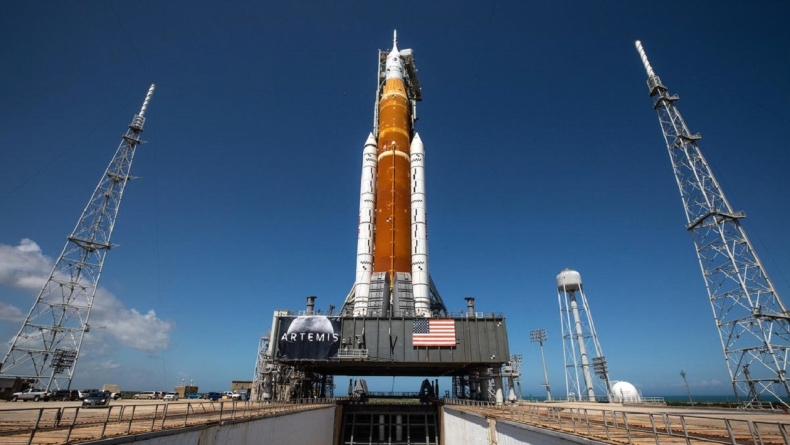-
LONDON: Indian-Origin Teen In UK Gets “Life-Changing” Cancer Treatment - 19 hours ago
-
SILICON VALLEY: All About Pavan Davuluri, New Head Of Microsoft Windows - 19 hours ago
-
LONDON: UK’s India Gate To Commemorate Role Of Indian Soldiers From World Wars - 2 days ago
-
HARARE: Shri Bramha Kumar appointed as the next Ambassador of India to the Republic of Zimbabwe - April 23, 2024
-
LONDON: Indian-Origin Principal Wins UK Legal Challenge Over School Prayer Ban - April 23, 2024
-
TORONTO: Indian-Origin Doctor Needs ₹ 2 Crore For Legal Fees. Elon Musk Responds - April 22, 2024
-
KINSHASA: India-Democratic Republic of Congo Foreign Office Consultations - April 21, 2024
-
LONDON: UK Court Allows Sale Of Nirav Modi’s Luxury London Apartment - April 21, 2024
-
TEHRAN: Travel advisory for Iran and Israel - April 20, 2024
-
LUXEMBOURG: Shri Saurabh Kumar concurrently accredited as the next Ambassador of India to the Grand Duchy of Luxembourg - April 20, 2024
WASHINGTON : NASA Shares Game Plan for Late August Artemis I Lunar Launch
WASHINGTON : NASA is targeting Aug. 29 for its Artemis I mega moon rocket launch day.
Why it matters
Artemis is NASA’s ambitious space exploration endeavor to bring humans back to the moon, and eventually, to Mars.
What’s next
There are still some testing procedures to carry out, but we now have a pretty good idea of the complicated liftoff sequence.
After a number of delays, NASA’s Artemis I moon mission is inching awfully close to the finish line. As of this week, the agency confirmed it’s preparing for an Aug. 29 liftoff, targeting date No.1 on a list of three possible windows.
“We’ve basically got a date with the range on the 29th of August,” Mike Sarafin, Artemis I mission manager, said in a Wednesday press conference, referring to the rocket’s future blastoff location. “If we’re unable to launch for whatever reason — weather, technical incursion in the range, that kind of stuff — our backup date is no earlier than September 2nd.”
But the agency still has several important tests to conduct prior to the big day, to make sure the mission’s massive rocket, dubbed the Space Launch System, is in tip-top shape for a trying journey ahead. This means even though Artemis I has made significant progress toward liftoff, there’s still room for error. For instance, “one of the remaining areas that is open is a core stage inner tank,” Charlie Blackwell-Thompson, Artemis I launch director, said Wednesday. Though Blackwell-Thompson didn’t appear too worried about that, because related test activities, such as those including the flight safety system, are scheduled to begin next week.
Another challenge yet to be dealt with is successfully rolling the SLS back out to the launchpad, a feat presently planned for Aug. 18.
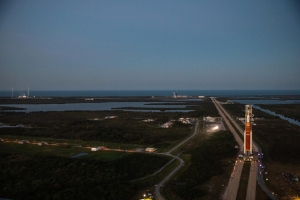
The spacecraft was returned to the Vehicle Assembly Building at Kennedy Space Center in late June for more servicing after completion of its wet dress rehearsal — a preflight testing sequence that involves filling the rocket tank with fuel. That wet dress rehearsal was a painstaking process in itself. It took four tries, and alongside NASA’s announcement of its completion, there was a slight caveat. The agency reported a hydrogen leak, yet assured the public that it won’t affect the road to launch. It’s been an absolute roller coaster ride for Artemis so far. Even SLS costs are adding up to a level far beyond projections made during the project’s genesis.
But should everything go to plan in the coming month, here’s what to expect on launch day.
NASA’s Artemis I moon mission launch sequence
The basic anatomy of the Artemis I contraption includes the SLS rocket, a giant vehicle adorned with NASA’s iconic logo, and the Orion spacecraft, which contains payloads meant for science exploration. The SLS is topped with Orion, like a pencil with a point.
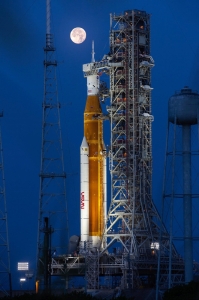
A full moon is in view from Launch Complex 39B at NASA’s Kennedy Space Center in Florida this past June.
The things it contains range from Amazon Alexa and TV character Shaun the Sheep to CubeSats and human stand-ins. “We’ll be flying some mannequins and some torsos that have simulated human tissue and organs, that are looking at radiation protection, radiation environment, the acceleration of the vehicle and how that affects the human body,” Melissa Jones, Artemis I recovery director, said in a Friday press conference. This bit is especially crucial because even though Artemis I won’t have a human crew, data it collects while traveling to the moon and back will inform later Artemis missions with astronauts aboard.
On Aug. 18, once the SLS rocket is rolled out to the launchpad and positioned over what’s called a flame trench, NASA will load it with cryogenic fuel and pump oxidizer into its core and upper stages. Then, “when all systems are go,” Sarafin said, “Artemis I will begin.”
Team SLS is up first.
After countdown, the SLS will ascend through Earth’s atmosphere. In two minutes, all its solid propellant will be consumed and the rocket’s boosters will be jettisoned. In eight minutes, all its liquid fuel will be consumed and the rocket’s core stage will be jettisoned. Then, for about the next 18 minutes, Orion and the rocket’s upper stage will take a lap around our planet by themselves. Orion will then take about 12 minutes to deploy its solar arrays and get off battery power.
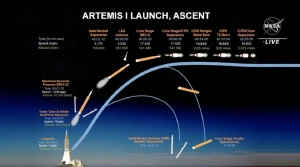
“Our final maneuver by the upper stage will be the translunar injection orbit maneuver that will be approximately an hour and 20, 30 minutes into the flight,” Judd Frieling, Artemis I ascent and entry flight director, said during Friday’s conference. “That will be about an 18 minute burn and will send us all the way to the moon, approximately a quarter million miles away.” At that point, as Sarafin puts it, the rocket has done its job and Orion is on its way to the moon.
Next, the Orion team steps in.
“There’s really no time to catch our breath,” Rick LaBrode, lead Artemis I flight director, said during Friday’s press conference. Most of Orion’s trajectory includes lots (and lots) of precise maneuvering that will take it along a complex path, as seen below.
As the spacecraft approaches the lunar surface, getting as close as just 60 miles above ground, per the team, it’ll begin conducting science experiments to test lunar gravity, radiation dangers and even take beautiful pictures, like a re-creation of 1968’s Earthrise, and much more.
Along the way, the Orion team will also be deploying a handful of 10 CubeSats from the hatch, which are like little boxy satellite systems. “We have no interaction with those secondary payloads. The only thing we’re concerned with is their initial trajectories where they’re being deployed,” LaBrode said.
On wrapping up its eventful excursion, Orion will return to our planet and get set for splashdown in the Atlantic Ocean off the coast of San Diego.
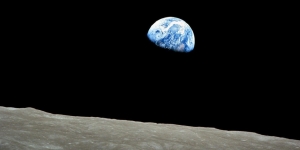
“Once we splash down, we’ll leave the vehicle powered for about two hours,” Frieling said. “We’re going to do some thermal testing to make sure we have adequate cooling for astronauts when we eventually have them on board and they’re waiting to be picked up by recovery crews.”
Pick up Orion, extract the data, and the mission is complete for Artemis I. Time to exhale.
But that’s not nearly the end of NASA’s lunar dream.
Down the line, Artemis I will lead to Artemis II, which will send humans into lunar orbit. And that will lead to Artemis III, which will land humans on the surface of the moon. Then, Artemis III leads to the first woman and person of color landing on the glowing rock, which then paves the way for the agency’s ultimate goal: trekking on Mars and building red planet science laboratories.
“When we think about Artemis, we focus a lot on the moon,” Reid Wiseman, chief astronaut at NASA’s Johnson Space Center, said on Friday. “But I just want everybody in the room and everybody watching to remember our sights are not set on the moon. Our sights are set clearly on Mars.”


















